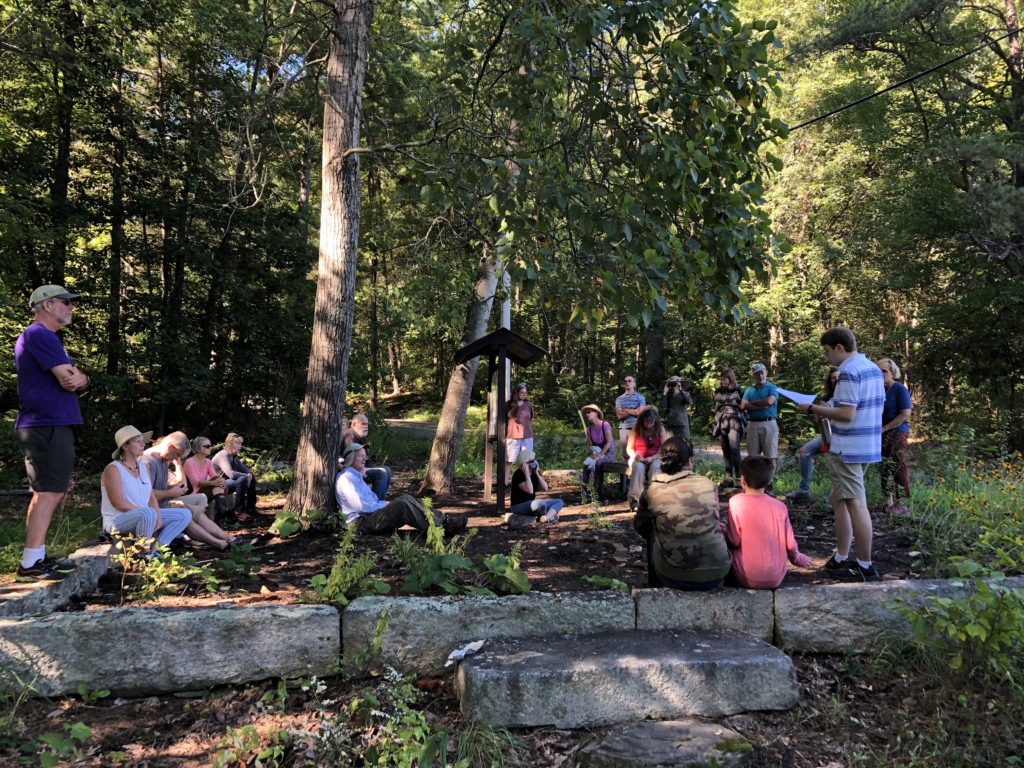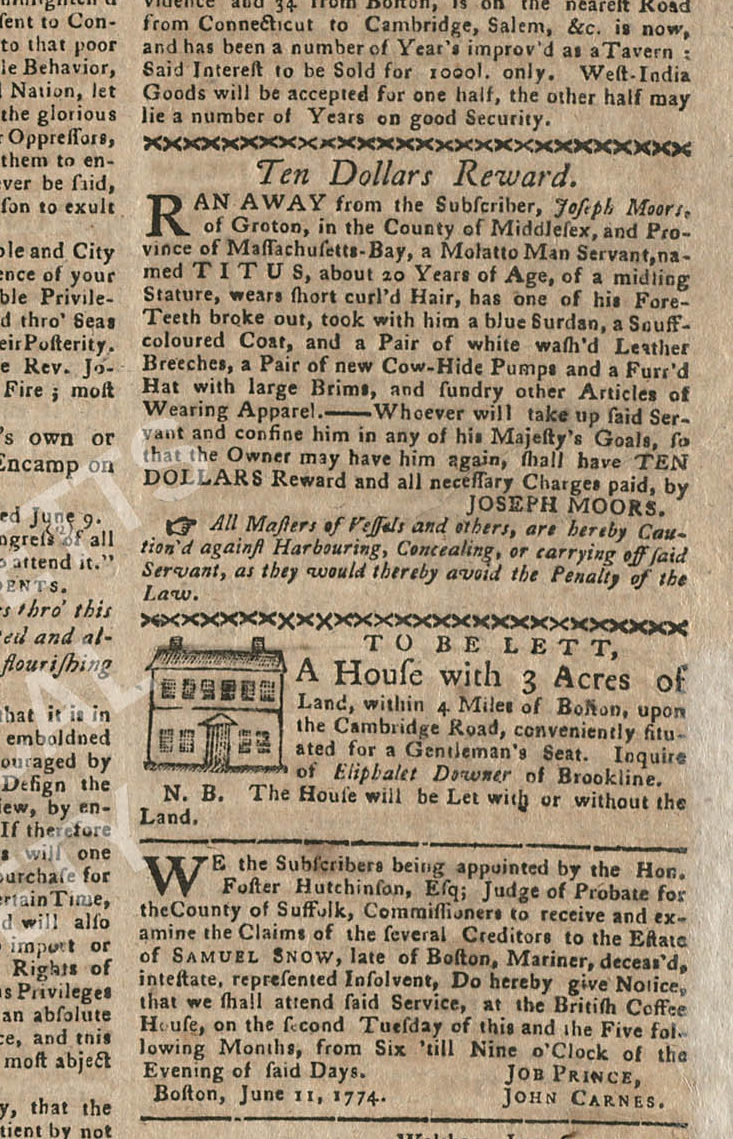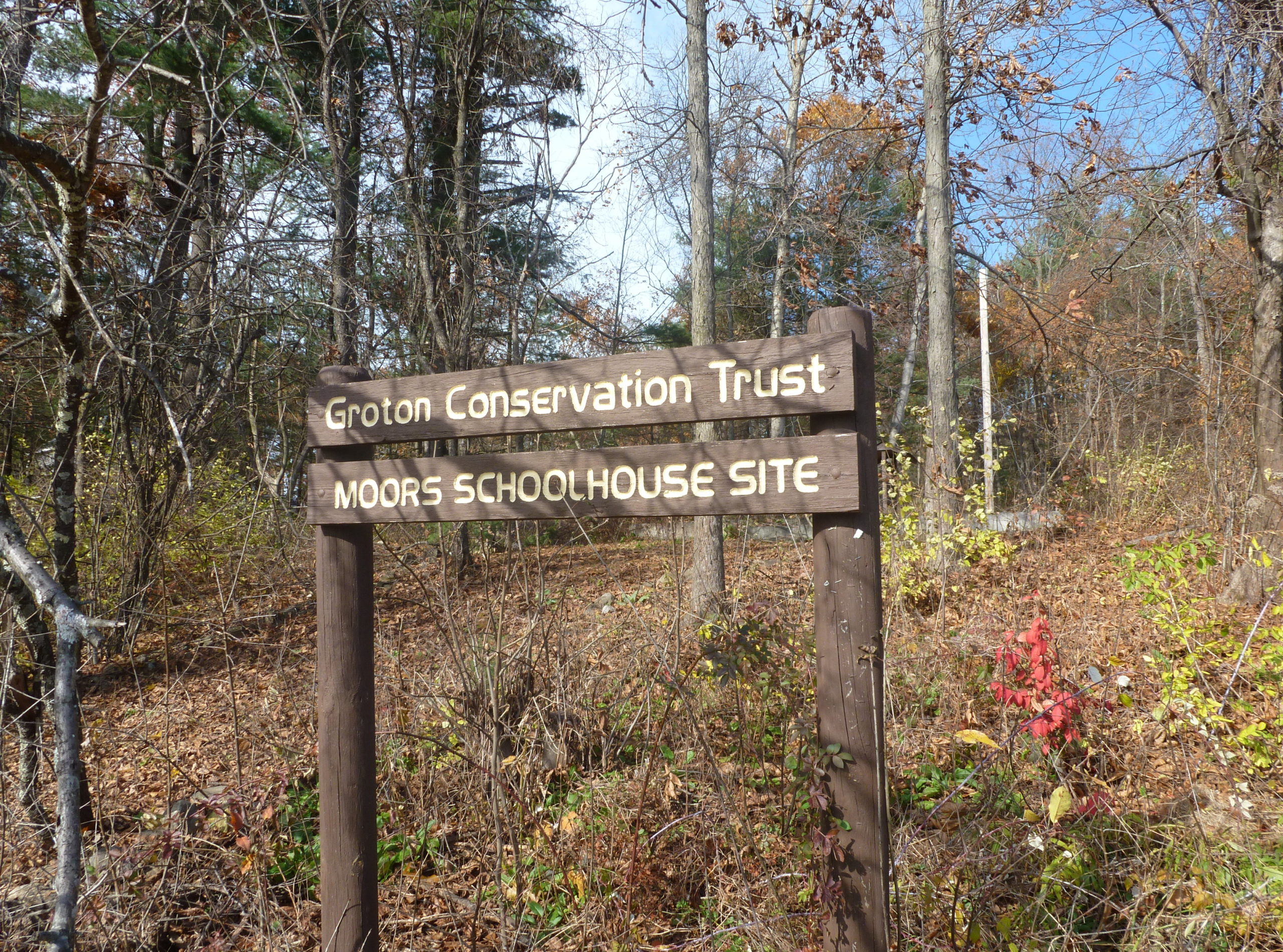
UPDATE: In June the GCT voted 8-6-1 to keep the Moors name on the property.
In a recent program on the architectural history of Groton, two GCT trustees heard a disturbing fact that resonated with them: Major Joseph Moors enslaved a human named Titus. Knowing that Moors is the name of a GCT property and that a history on that schoolhouse stated it was named for the Major, this revelation was immediately brought to the attention of the Board.
The trustees are concerned that human enslavement, a part of Groton’s history, is also attached to one of the GCT properties. An internal committee was formed to fully investigate the Moors name, as well as how the schoolhouse site earned that name. The committee’s research was revealing and led the Board to an unanimous decision: this was a story that needed to be told.
Using town records to understand our uncomfortable past
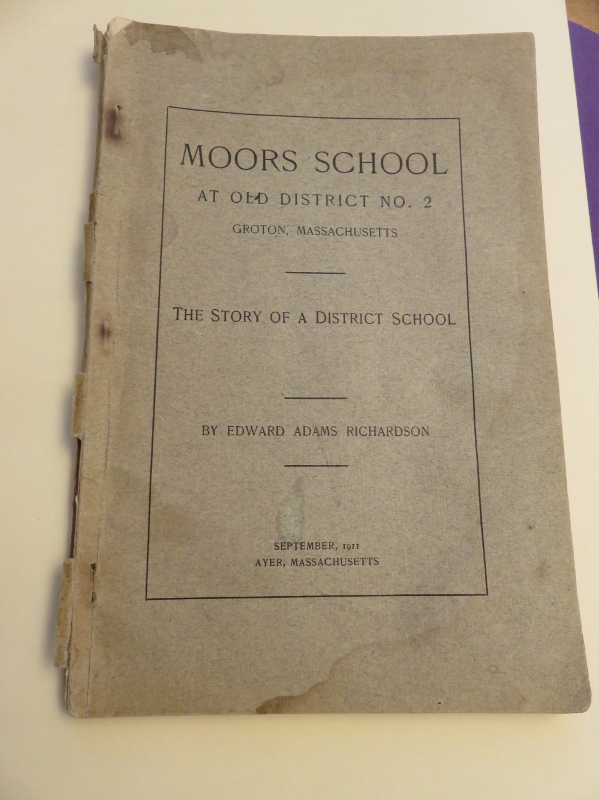
Town records, property files, recorded histories, and even old magazines pieced together a fuller picture of the Moors family, early education in Groton and the naming of schoolhouses in the 1800’s.
Multiple town histories by Dr. Samuel Green, Caleb Butler and Edward Richardson confirmed the enslavement by two generations of the Moors family.
Abraham Moors (1692–1780) was the first member of the family to settle in Groton, purchasing a house around 1716/1717 at what is now 518 Farmers Row. His son Joseph Moors (1738-1820) served in the French and Indian War and in the Revolutionary War, fighting under Col. Prescott at the Battle of Bunker Hill. He left the army with the rank of Major and was generally known by that title. He was a very prominent member of the community and served as the town’s representative to the General Court for nine years.
Dr. Samuel Green reported that Abraham Moors owned “a negro slave” named Zebinah and that the town’s birth records show that her son Titus was born in 1751. Dr. Green and others report on the advertisement in the June 13, 1774 edition of The Boston Gazette, and Country Journal in which “Joseph Moors, of Groton” offered a reward for the return of “a Molatto Man Servant, named Titus, about 20 Years of Age.”7 Titus was 23 years old and Joseph Moors was 36 in 1774.
Correcting misinformation
Confusing historical designations led to the name of the schoolhouse attached specifically to Major Moors. The “Legacy of Moors School: Groton District No. 2” summarizes the history of that school as recorded in Edward Adams Richardson’s 1911 “Moors School at Old District No. 2: The Story of a District School” based on inaccurate information. He reports that “For about 130 years Moors School, named in 1874 after Major Joseph Moors, a veteran of two wars who had died by 1911, was devoted to the business of educating children from the ages of five to about 15.”
A deeper study adds more clarity. One or more school buildings preceding the construction of the Moors Schoolhouse were almost certainly built on Major Moors’ property and probably near the same location as it stands today. The district was known as “Major Moors’ District” prior to the numbering of school districts.That district was named “District No. 2” in 1805 and was known by that name thereafter. The Moors Schoolhouse building was built some time between 1793 and 1805 and was named the “District No. 2 School” in 1805.
Along with other schoolhouses in town, the “District No. 2 School” was only known by that name until they were all renamed in 1873. “District No. 2 School” was renamed “Moors School” after the Moors family. The major is not mentioned by name, nor is any other family member. An actual schoolhouse existed on the property.
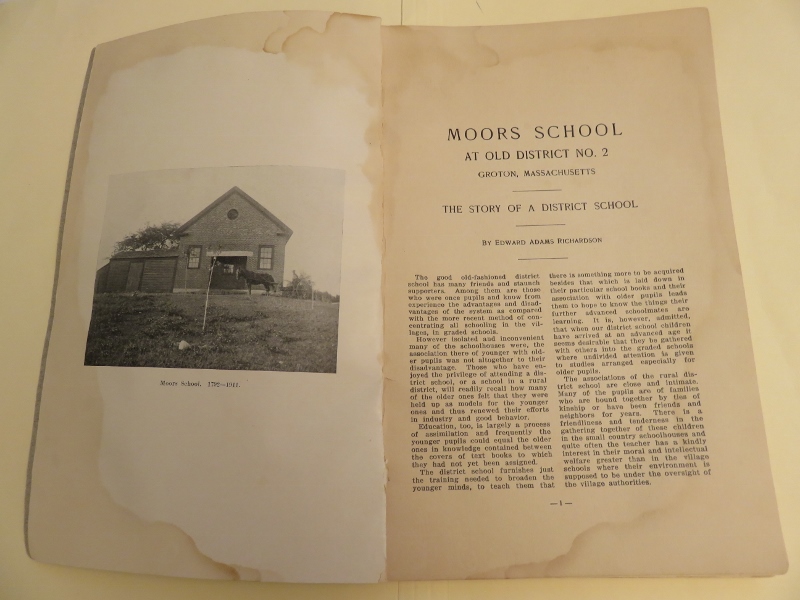
THE MINUTES OF TOWN MEETING, APRIL 7, 1873
“The report of the Committee appointed in March last to name different Schools was read, accepted and adopted and the Selectmen were instructed to provide signs for them also. Voted – that the School Committee be requested to incorporate said report into their annual report. The following is the report of said Committee.”
“Report of Committee to Name Schools No. 2 – Moors School in honor of the name of a large family by that name who resided in that section of the town, and whose descendants continue so to do.”
— Committee Henry D. Dix, J. H. Hoar, John Gilson
Stephen and Mary Sabine conveyed the site to the GCT for “no more than 100 dollars” in November, 1968. The schoolhouse is not mentioned in the deed and there are no naming restrictions noted. With respect to the comments both Richardson and Boutwell made concerning ownership of the schoolhouse and the land on which it sits, the Sabines seem to have been aware of the issue and addressed it. They have two deeds to the property the GCT now owns. In 1935 they purchased the property from Frances Hurley, but the Town Meeting of February 1, 1937 authorized the Selectmen to “deed and convey, for and in the name of the Town, whatever rights the Town may have, if any in the Old District No. 2 School House, known also as the Moors School…”.
What is next for the Moors Schoolhouse
What happens next remains to be seen. The GCT Board is committed to transforming the site into a reflective spot, sharing this story and inviting visitors to think deeply on our troubling history with enslavement and land appropriation. The GCT hopes to partner with other organizations in town to tell a fuller story of the schools, our founders, town government and how racism toward Blacks and Native Americans shaped Groton. We will be updating this work on our website and through our newsletters. One thing is clear: the time is right to begin these discussions with facts and compassion.
And then there is the fundamental question about the name. Does the GCT rename the site? Does ‘District No. 2’ have more historical relevance? Are there more appropriate Moors namesakes, such as Dr. John Farwell Moors, a Unitarian minister and abolitionist, and Major Moors’ grandson? There is much to consider because we now know a simple name can represent so much.
Sources for the Moors Schoolhouse Site citations
- Legacy of Moors School: Groton District No. 2, C. David Gordon, page 4 in the GHS newsletter Then and Now Vol 19, No 1, Winter 2018 issue
- Groton Historical Series, Vol. I Dr. Samuel A. Green, 1884 – 1896
- Groton Historical Series, Vol. II Dr. Samuel A. Green, 1884-1896
- Groton Historical Series, Vol. III Dr. Samuel A. Green, 1884-1896
- Groton Historical Series, Vol. IV Dr. Samuel A. Green, 1884-1896
- History of the Town of Groton Including Pepperell and Shirley, Caleb Butler, 1848
- Groton Annual Report of Expenditures, 1842 – 1861
- Moors Schoolhouse at Old District No. 2, Edward A. Richardson, 1911
- The Community: Groton, Massachusetts, Edward A. Richardson, 1911
- Report of the Historian for the Year 1914, Georgianna Boutwell, 1914
- Groton Town Meeting Minutes, April 7, 1873
- Groton Town Meeting Minutes, March 2, 1874
- The Boston Gazette and Country Journal, June 13, 1774
- Massachusetts Acts and Resolves, 1789
- Massachusetts Acts and Resolves, 1799
- Groton Town Meeting Warrants and Minutes, 1768 – 1806, from which relevant excerpts have been transcribed


